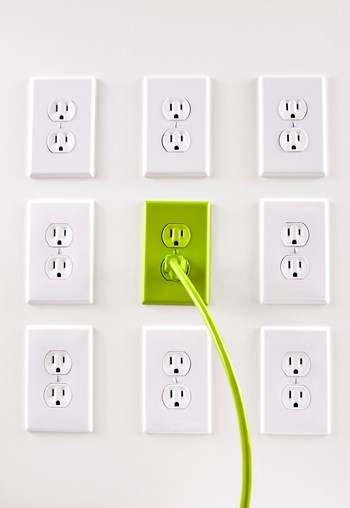
Sustainability. It’s one of those buzz words that seems to be mentioned in every conversation regarding energy and the environment. But what does it really mean? And how does it apply to you and to your community association?
Wikipedia defines sustainability as “the capacity to endure,” and goes on to discuss how sustainability also encompasses the concepts of stewardship and the responsible planning and management of resources.
When sustainability is being used in reference to community associations, those are the three key concepts to keep in mind: endurance, stewardship and responsible planning. And when we take these key concepts into a level of practical application, we’re talking about reducing operating costs by promoting increased efficiency, lower maintenance costs, and striving to be environmentally responsible.
Evaluate & Compare
Since approximately 70 percent of a typical community or building’s budget is comprised of the costs of maintenance, energy and replacements, integrating these expenses is key to minimizing long-term costs. Instead of viewing the individual costs as having designated budget locations, it is important to identify the distinctive relationship between each facet of total cost of operation. A professional evaluation of the existing facilities’ efficiency is one important step that can be taken by an association to identify potential energy savings and sustainability opportunities.
Significant opportunities for savings can be identified by analyzing life-cycle costs. For example, traditionally a reserve study—the cornerstone of responsible planning for community associations—only evaluates the replacement costs and remaining lives of the common area components. An integrated approach to sustainable budgeting also provides an analysis of the energy and maintenance costs associated with each component, outlining the potential reductions.
Similarly, it is important for any association undertaking a design project to be educated regarding the latest options in sustainability. For capital improvement projects, the association should evaluate the use of construction materials that require less maintenance or energy over the course of their useful lives. This can potentially include the replacement of cedar siding with vinyl siding, or the substitution of a composite material in place of wood components for decks and exterior trim. In-depth, professional energy audits and recommendations for high-efficiency mechanical system upgrades can also help propel an association towards greater sustainability.
Furthermore, it is worth noting that the sustainable design improvements that are made to a single-family home, townhome or building will certainly prove beneficial in preserving the building’s market value in today’s tentative real estate market.
Navigating a Deregulated Market
Additionally, as many states, including New Jersey, are now allowing and recommending the use of deregulated energy, communities and building owners should educate themselves regarding the various options and anticipated savings that are provided by deregulated energy. Through deregulation, the New Jersey Energy Choice Program allows individuals to remain with their local utility company for all billing, safety and reliability issues while empowering them to take charge of their energy bills and save money by selecting a third-party supplier. Additionally, associations can use this opportunity to achieve greater stewardship and environmental responsibility by selecting a third-party supplier which utilizes a greater percentage of “green” renewable energy.
Navigating current energy and environmental trends can be confusing and even intimidating. As with most things in life, ‘keeping it simple’ can help us to integrate these modern concepts into useful practice. Remember: the foundation of sustainability for community associations is to reduce operating costs by promoting increased efficiency and lower maintenance costs, while striving to be environmentally responsible. By implementing a few simple steps—such as reviewing maintenance and additional savings opportunities, analyzing not only first-costs but also long-term costs, and exploring the benefits of switching to a third-party, “green” energy supplier—your association will find itself with the “capacity to endure” whatever the future may hold.
Mitchell H. Frumkin, PE, RS, CGP is president of Kipcon, Inc., a full-service engineering firm based in North Brunswick.






Leave a Comment